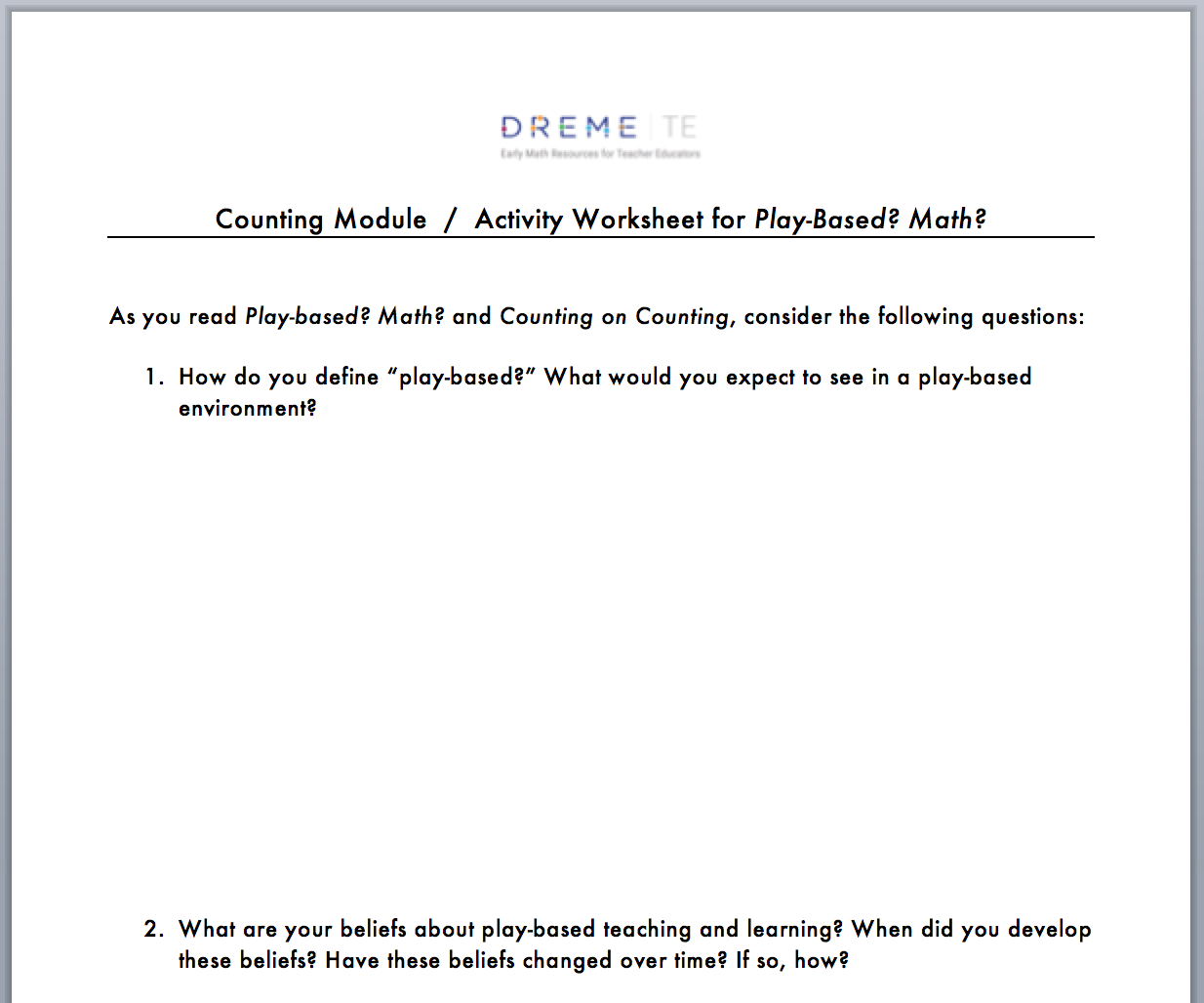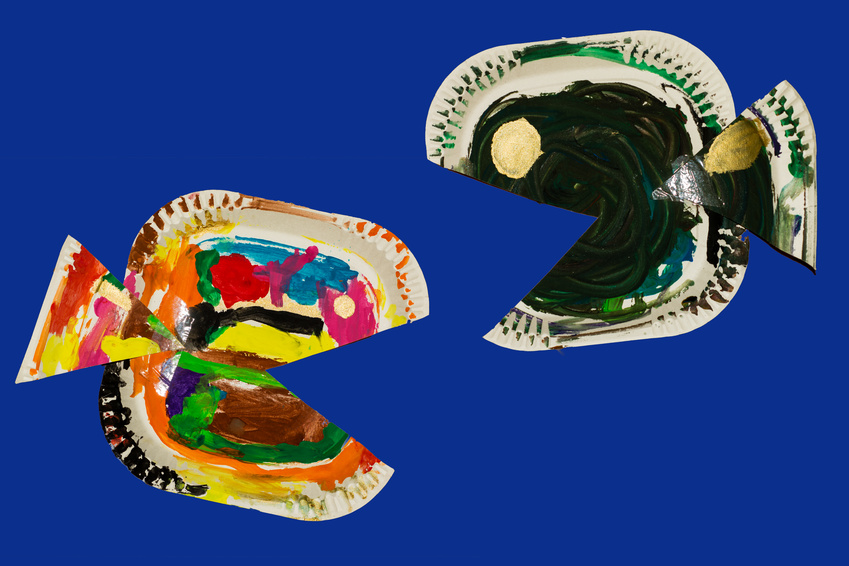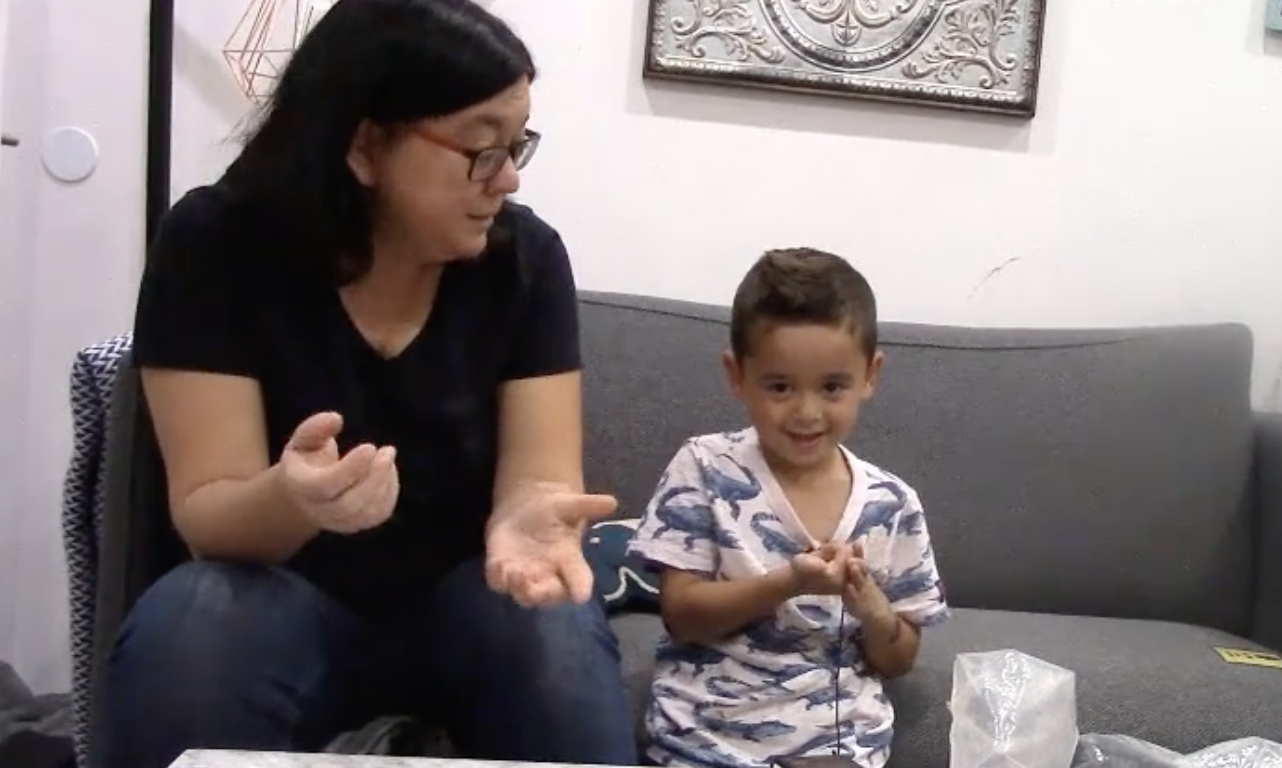A vignette about Joan and Tessa exploring how teachers learn to help their children explore math, not only through play, but also intentional teaching.
Joan and Tessa: Where Does Math Fit?
In a recent meeting, Joan and Tessa's director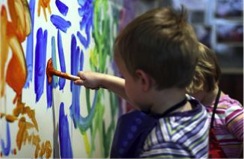 mentioned that some of the parents had approached her about a newspaper article they had read which said that early math was really important for later success in school. The parents asked whether Appleberry was doing enough to support math. To reassure the parents (and frankly, to reassure herself as well), the director has contracted with a highly respected professional development program to help build on the staff’s current knowledge about early mathematics. The director has hired substitute teachers so that Joan and Tessa and the rest of the staff can attend the half-day monthly meetings. The professional development program also includes two hours of coaching every other week in each classroom.
mentioned that some of the parents had approached her about a newspaper article they had read which said that early math was really important for later success in school. The parents asked whether Appleberry was doing enough to support math. To reassure the parents (and frankly, to reassure herself as well), the director has contracted with a highly respected professional development program to help build on the staff’s current knowledge about early mathematics. The director has hired substitute teachers so that Joan and Tessa and the rest of the staff can attend the half-day monthly meetings. The professional development program also includes two hours of coaching every other week in each classroom.
On the day of the first professional development meeting, Joan and Tessa meet for coffee before the meeting starts. Joan has seen a lot of professional development come and go over the last 20 years and expresses concerns about this one.
You know, Tessa, I think we are doing a great job. Maybe other teachers aren’t supporting math, but I know we are. Our kids are obviously happy and learning a lot. I’m a little nervous about what these PD folks are going to tell us to do. Math usually means worksheets, memorizing, and chalkboards. I just don’t think that’s right for kids! I’ve heard that drill and kill is really bad for them and that if they have to do too much math they won’t want to do math later in elementary school. Preschool is for play, right? I mean we organize the room so that they learn all the time!
Tessa is truly relieved that Joan has brought this up. She also believes that children learn best through play. After all, that’s what so many of her university courses emphasized...
I’m so glad you said that. I totally agree! Even in my child development textbooks they said that early childhood should be all about play. I mean, the kids are learning all the time. Just yesterday, in the block area, Johnny was telling me that the blue tower was the tallest, the red tower was the smallest, and the yellow one was in the middle. I mean, isn’t that great! He even had them in order of height from the left side to the right side! Now, if I would have told him to build the towers that way, it would have been just wrong!
The PD Program Begins
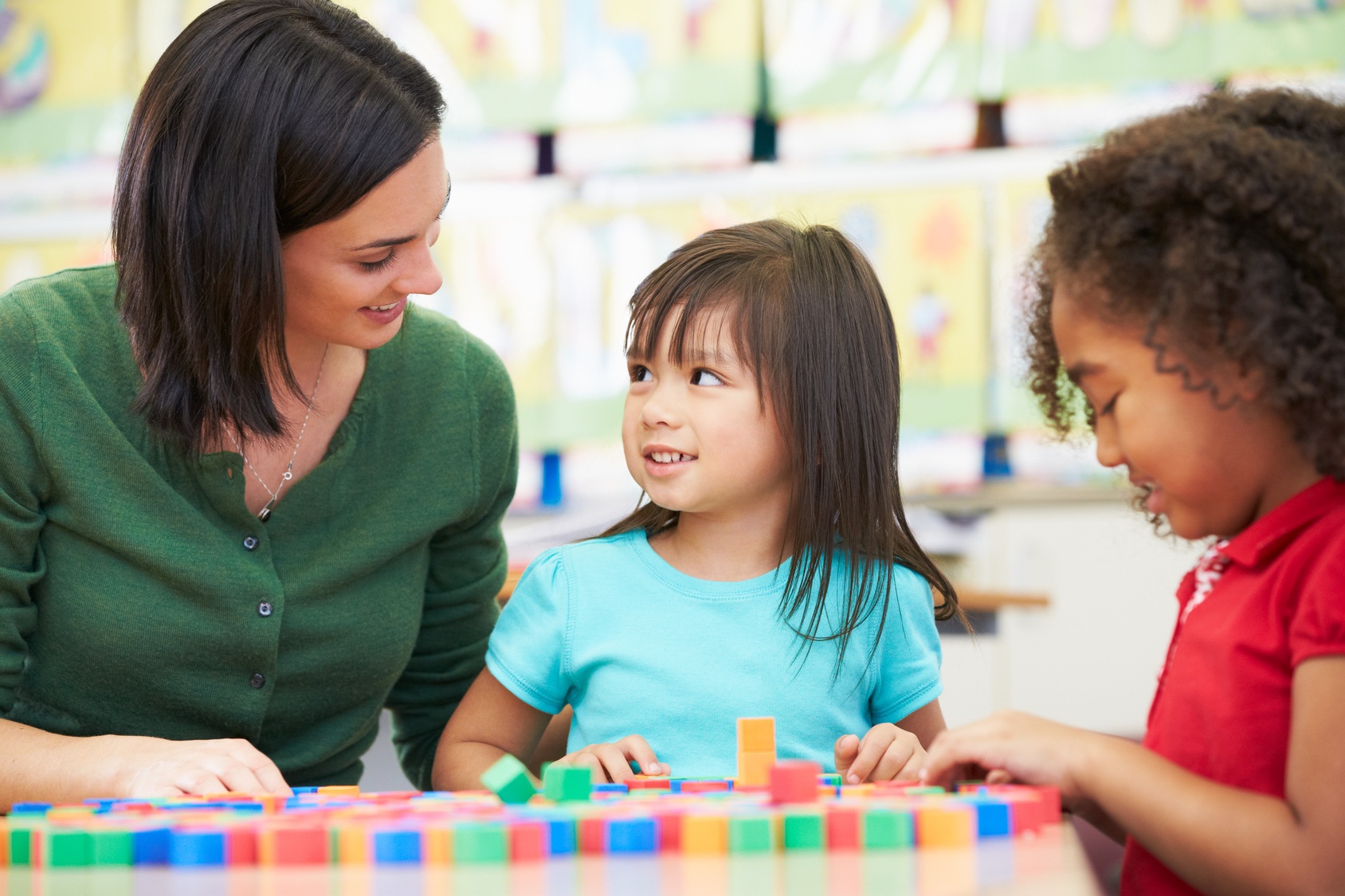 Later that morning, as the PD program starts, Tessa and Joan only half listen while Maria, the PD instructor talks about the importance of teaching math to young children. They are aware of the pressures on preschool teachers to make preschool look like real school and to get children academically ready for a kindergarten curriculum they believe has become too rigorous and is inappropriate for five-year-olds. They want no part of this move towards pushing children academically, undermining the joy of learning and their self-confidence. They know that children learn best by initiating their own activities and discovering how the world works through their own actions. And they refuse to compromise on what they know is best for children.
Later that morning, as the PD program starts, Tessa and Joan only half listen while Maria, the PD instructor talks about the importance of teaching math to young children. They are aware of the pressures on preschool teachers to make preschool look like real school and to get children academically ready for a kindergarten curriculum they believe has become too rigorous and is inappropriate for five-year-olds. They want no part of this move towards pushing children academically, undermining the joy of learning and their self-confidence. They know that children learn best by initiating their own activities and discovering how the world works through their own actions. And they refuse to compromise on what they know is best for children.
After introductions and an explanation about the PD program, Maria shows a video of a teacher working with a small group of children counting collections of small objects. Joan and Tessa are appalled. Tessa whispers to Joan…
The poor kids. They must feel like they are getting the third degree with all these questions. The teacher is totally taking away the children’s initiative, making them do what the adult wants them to do, not what they want to do. The teacher makes it seem like a game, but she is too intrusive. I would never do that to my kids. I am not going to make them count if they don’t want to.
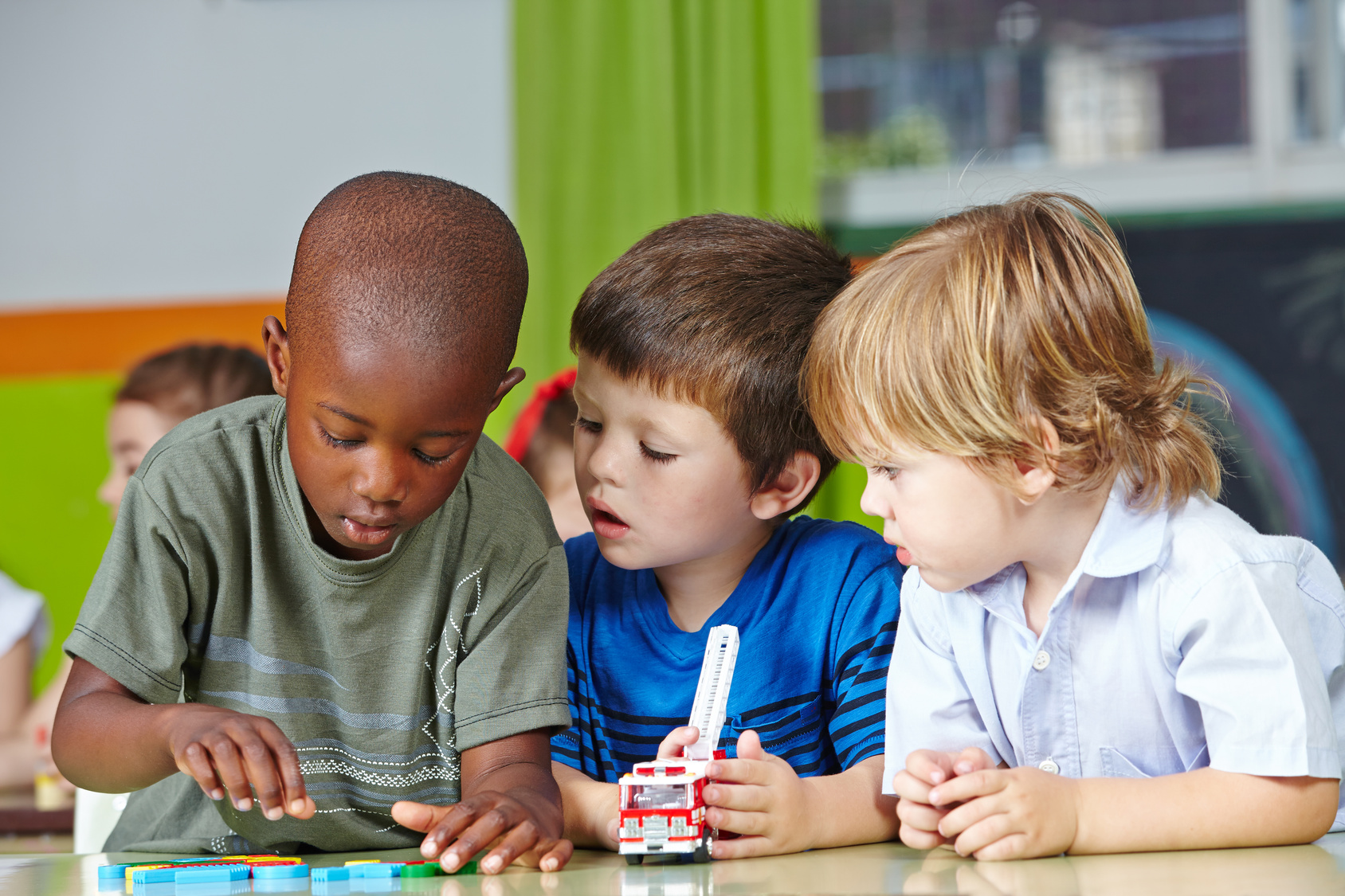 Tessa and Joan are also concerned that the amount of time doing structured math activities will take away from children’s opportunities to engage in self-initiated play, from which they believe children will learn just as much and enjoy more. Joan whispers back…
Tessa and Joan are also concerned that the amount of time doing structured math activities will take away from children’s opportunities to engage in self-initiated play, from which they believe children will learn just as much and enjoy more. Joan whispers back…
If they are doing math activities all the time, when are our kids going to learn how to play together, or to develop their creative side, or explore things that are interesting to them? There is just not enough time in the day to add math!
Maria stops the video and announces a break. She’s noticed that Tessa and Joan are watching the video with looks of dismay and whispering.
As she comes over to their table, she remembers how dubious she once was when introduced to structured math activities. She, too, had once taught in a play-based program that cherished children’s thinking. She sits down at their table.
I’m so glad you’re here. I have heard so much about Appleberry. It sounds just like the program that I taught in for 15 years. I still get to work with children, but I must admit that I’m just a little jealous of all of the time that you get to spend with them! What do you think of the video so far?
Tessa and Joan look at each other. Joan starts first, taking a deep breath…
Well, it looks interesting. Ummm I, I’m a bit worried. I mean, you worked in a play-based program, right? Then you know how important play is. All those questions from the teacher—geez, I’d call that teacher-centered. We have math centers that are available all day long and I think that is just so much better. Then the children can choose what they want to do. That way they are engaged and learning all the time and really owning the knowledge.
Tessa follows up…
We mean, you know how important play is. How did you get into this direct instruction stuff? Do you really believe in it?
Maria has heard this before, and knows that it took a lot of convincing before she understood how important it was for children to have structured math activities with clear learning goals, and in which they interacted with the teacher.
You know, I did feel the way you do now. And, for a long time, too. Then one of my mentors asked me to observe every time the children did math in my classroom. Wow, that was an eye-opener. I knew that the math center was popular with the children and that many of the children used counting when they played hide-and-seek and other games. But when I started to keep track of what kind of math and how much they were doing, I was shocked. Sure the children counted sometimes when they were playing, but many of them couldn’t actually count more than a few objects, they just knew the counting words. They didn’t understand that you have to have one-to-one correspondence between objects and number words. And, the math center! I was almost ashamed to call it that after I observed for a couple of days. There was almost no math. The children had fun, but they never used the little bears for counting—they made little bear groups and played with them like dolls. I watched children struggle with fair-sharing, even with just a handful of popular toys. So I started to think about how I could create more productive learning opportunities that were still playful. I learned about some strategies to help children's math skills in a way that young children find fun and engaging, and thought I’d try it. I’m actually going to talk about it after the break.
Scaffolding Children’s Learning
During the professional development program later that day, Joan and Tessa are introduced to the five counting principles. As they work in their small group to develop an activity that both supports young children in learning how to count objects and allows teachers to assess children’s understanding, Joan and Tessa glance at each other. During break, they move to the side of the room with their plates of fruit and talk. Joan starts the conversation…
Well, it isn’t as bad as I thought it would be. At least Maria is talking about playing games. I never knew there was so much involved in counting things! I guess I never thought about whether children really understood how many things were in a group when they were counting them. I guess I just assumed that if they could say the numbers right, then they could figure out how many trains they were supposed to take out of the train box. But, you know, the proof is in the pudding. I’m willing to try these games with the kids, but I’m just not going to keep making them play it if they don’t like it.
Tessa is having similar thoughts, and is now remembering some of what her textbooks said. Learning is scaffolded through interactions and experiences that support children’s progress to the next step in development. She also recalls an instructor who said that children can’t come up with the counting words all by themselves, but that they need interactions with “more knowledgeable others” to gain this math vocabulary. Tessa replies…
I mean, Maria has a good point, counting really is complicated. And, I guess the kids really can’t learn it alone. And Maria seems to genuinely like games. I think we should try it.
Although Maria’s story didn’t really convince them, over the next four weeks before the next professional development session, Joan and Tessa decide to monitor the math in their own classroom and they try out a small group counting activity right after morning snack. They start with Counting Collections, putting out a bunch of bags with sets of a variety of fun countable objects, and discussing the children’s counting strategies with them. When Tessa and Joan compare notes from their observations, they both notice that object counting and counting discussions are pretty much only occurring during the small group Counting Collections activities.
The professional development coach spends time in their classroom every other week. They’ve asked her to show them how to ask questions that could really make the activity interesting. As the month goes by, they realize that the children are beginning to line up to take part in the Counting Collections activity when all the seats for that activity are taken. The coach has shown Joan and Tessa that, with support, the children can even record their collections on paper. And they love talking about “how they know” there are six or ten dinosaurs in their bag. In addition, Joan has noticed a change in the block area…
Did you see Benji with the alphabet blocks yesterday? He wanted me to write down how many blocks he had counted when he made that really tall tower! He was so excited! I’m so surprised that the kids like this counting thing so much. It’s really useful too! The other day Micah and Lena were arguing over the trains again, and I asked them to figure out a way to make sure that they each had the same number. When I came back, Micah had four cabooses and Lena had five. That didn’t look fair, but when I asked them how they knew it was fair now, Micah said that they each had four cabooses, but there was one extra so they were taking turns having five. Isn’t that incredible??
Tessa has seen similar changes around the classroom. While she still isn’t completely on board with the whole math thing, the counting part definitely seems to have worked out…
I know. And, your idea about putting up four bead bracelets in housekeeping and four in the block area for each child to wear so that the kids can figure out on their own whether there is room for one more kid was terrific. No more bracelets hanging on the hook means no more room! That has saved us so many arguments. I might have to take back what I said about math and play. I guess math can be play, but play might not be enough math!

